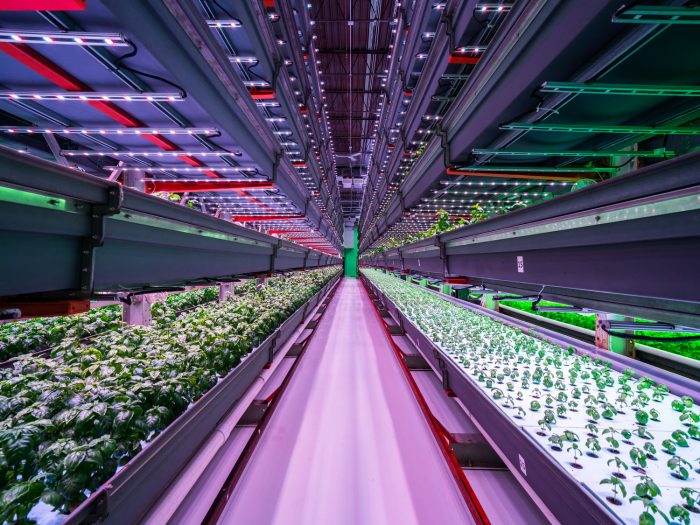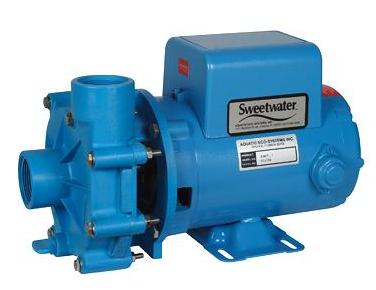Learn The Ins and Outs Of Indoors and Vertical Aquaponics! Part 4
For parts 1 through 3 click these links:
Part 1
Part 2
Part 3
Vertical Aquaponics, Part 4:
First, some additional reading to round out your knowledge of the issues involved in vertical and indoors farming: here’s a link to download a scholarly critique by Stan Cox and David Van Tassel, plant breeding researchers at The Land Institute in Salina, Kansas (www.landinstitute.org), of Dickson Despommier’s claims that vertical farming is the answer to our current struggle to produce enough food with conventional farming.
How Many Plants Do You Need To Be Profitable?
In our last Part, we talked about the relative efficiency of the different kinds of lights available, and how inefficient lights result in a huge electric bill AND a huge air conditioning unit and bill.
We concluded that 40%-+ efficient LED’s were pretty much the only ones you can afford, because they’re the only ones that result in the absolute minimum of air conditioning required (if that sounds confusing, just re-read Part 3, above). It turns out that buying air conditioning and electricity to make up for using inefficient LED lights can really break your bank and bankrupt your farm!
In this Part, we’ll discuss how many plants you need to have in your space for it to be profitable. The most comprehensive way to show that information is a spreadsheet of an indoors aquaponics operation in a building of about 10,000 square feet, which you can download using the link below:
Click on this link to download the data in spreadsheet form.
For those of you who don’t “do” spreadsheets, we offer an example of how this works:
First, your farm has fixed costs for the building (either rent or mortgage), things like insurance, property tax, signage, advertising and marketing, accounting and legal expenses, and depreciation. Together they are referred to as fixed costs or “overhead”: that is, you have these expenses even if you don’t produce a single head of lettuce! They are expenses that don’t directly contribute to the production of a profit.
Your farm has other expenses too: these are usually called “operating expenses”, and are things directly connected to, and in proportion with, what is being produced. These are expenses such as seeds, potting mix, fish fingerlings, fish food, labor and management wages and benefits, electricity, water and natural gas, packaging, shipping your products to the buyer, and so on.
It’s obvious that if you add all your overhead costs and all your operating costs for a year, then divide by the dollar value of the plants you sold in a year (not produced, not the same thing at all!), then you’ll have an accurate picture of what it cost to produce each plant you sold. If you sold the plants for more than the total of your operating and overhead expenses, then you made a profit.
What’s not quite so obvious is that the more plants you have in your growing space, the less each plant costs you to grow. This is because your overhead costs you less per plant. If you have 100 plants and a yearly overhead of $10,000, then each plant costs you $100 worth of overhead to grow; obviously not a profitable business!
If you’ve got 40,000 plants with the same overhead, then your overhead per plant is 25 cents. Now it’s much more likely you can make a profit. You still need to add in the operating expense to get an accurate picture of your cost per plant. But operating expenses work in a similar fashion to overhead: the more plants you grow on a certain amount of operating expense, the less each plants costs, and the more likely you are to make a profit.
Where are we going with this? Just trying to show you how important it is that your proposed vertical or indoors growing technology have a minimum plant density per square foot of building area, or there’s no chance of it ever being profitable.
In our spreadsheet example, our growing technology holds 17.67 plants per square foot of building floor space, or a total of 176,700 plants in 10,000 square feet. This includes all plants at all stages of growth: those in the rafts as well as those in the sprouting tables. Check this number against the number of plants your proposed growing technology holds per square foot.
If yours is less, I’d be concerned. If it’s half or less, then feel free to give us a call. But we’ll show you exactly how we get that many plants in this small an area (using our CAD drawings of this facility) in one of our next Parts of this series.
(Below) Some not-efficient LED’s that help the Chicago indoor aquaponics farm Farmed Here go bankrupt in March 2017.
We’ll show you how to design a profitable indoors growing facility, and how you get that many plants in an indoors grow in Part 5 of this series!
Cheap Stuff And Value Engineering
When we got back from the UVI course in June 2007 we were excited about getting started in aquaponics, and immediately started pricing components. We were shocked to find that a 10′ fiberglass tank that cost $1,935 on the mainland had another $2,200 of shipping costs to get it to Hawaii. The smaller tanks we needed had similar painful price tags attached, along with everything else that had to get shipped in. The 2003 UVI “system cost” of $42,000 that they gave us during the 2007 course turned out to be $85,000 in Hawaii in 2007. This information forced us to rethink how we would build our systems, rather than just building identical systems to the ones UVI had. We started value engineering the systems instead of just shopping in catalogs.
(Below) An energy-efficient pump that only costs $678 with shipping; it pumps 40 gallons per minute, and uses $655 per year worth of electricity.
(Below) Another pump that only costs $379 with shipping; it pumps 50 gallons per minute (that’s a little better than our blue pump above). It looks cheaper on the surface, BUT it uses $6,845 per year worth of electricity, which is unacceptable compared to our blue pump above!
Which pump would you buy? Thought so.
Value engineering is when you research and develop a system component or subsystem that works just as well but costs less than your first selection. Because we had to build these systems on a limited amount of loan money (while living on the loan at the same time!) we were forced to review every single system component and subsystem to determine if there was a better way to do things. Because we knew we would forever be paying for any inefficiencies we designed into these systems, we were particularly careful to be thorough and precise in our research and design work.
Don’t confuse “Value Engineering” with “Cheap”! Don’t waste your money buying cheap pumps, air pumps, airstones, or other aquaponics equipment! We are always hearing about “I got a good cheap sump pump (or Jacuzzi pump) at a yard sale for $25. Will it work?”. Yes, it will work. However, the pumps that are specified with the different sized systems are exactly the right size for those systems, and will not use any more energy than necessary to do the job right.
Here’s an example of this problem: you buy a $25 Jacuzzi pump at a yard sale for a 64-square-foot MicroSystem instead of spending $62 (plus shipping!) for the right pump as specified in the materials list. You think you saved money, right? That’s until you realize that the right $62 pump only uses $93 of electricity a year, and the cheap pump uses $1,294 of electricity a year. This “savings” cost you an extra $1,201 a year, but go right ahead if you still feel it’s a deal.
The point here is that energy cost can be far more than any difference in original equipment cost, so you want to buy the most energy-efficient piece of equipment that will do the job, even if it costs four times as much as the cheap one! What you need to do is educate yourself, and think about energy, labor, and other costs associated with a purchase of a system component before buying it. What’s best is to find someone who’s using the same thing and has had no problems with it; the aquaponics forums are good for this. In this blog, we ONLY mention equipment by name that WORKS!
An old farmer friend on the Big Island said it best: “Cheap no good. Good no cheap”. Any time you think you’ve got a “deal”, look twice. You may be the one paying an extra $1,200 a year.
Glossary of Terms and Definitions
Note: this is a constantly evolving document. WE know what we mean, right? But if YOU find an aquaponic term that is the least bit confusing or you don’t understand, and it’s NOT in this list, please leave a comment asking for it to be added. As Captain Picard says: “Make it so!”. [Read more…]
Energy And Sustainability Implications Of Aquaponics
Calculating energy usage is difficult, especially when you are comparing conventional farming with all its energy inputs [Read more…]
How To Have Fun And Make Money With Aquaponics
1. Features
- Aquaponics produces fish and vegetables by combining aquaculture and hydroponics. It solves the problems inherent in hydroponics and aquaculture without the costly and unsustainable solutions those methods now use. Our systems use fish tank effluent water as the nutrient solution for an organic hydroponics growing operation. The hydroponics acts as a biofilter for the fish tank water, cleaning and recirculating it so the fish stay healthy.
Aquaponic Inspiration To Get You Moving
You will build the aquaponic systems that change the way the world grows its food, so that everyone has enough to eat. To do that, you need to understand systems.
[Read more…]
Fish Tank Discussion
We can’t say, “this tank is best”, or “that tank is no good“; because this varies widely depending on what is available locally, local labor costs, climate requirements and other criteria [Read more…]
Growing LOTS Of fish
High Density (HD) Versus Low Density (LD) Systems
Low Density Systems (LD) We developed our LD systems after receiving many requests for an economical, viable, off-grid aquaponics system [Read more…]
So You Still Want To Do An Experiment
This section was all derived from “experiments” done by us or one of our students, with sometimes disastrous results. If it says to not do something in this blog, there is a solid reason behind that recommendation! [Read more…]
How To Do A Useful Experiment In Aquaponics
Most people think of “science” as something which involves millions in research funding, and that is only done by PhDs. Not true [Read more…]
- 1
- 2
- 3
- …
- 5
- Next Page »